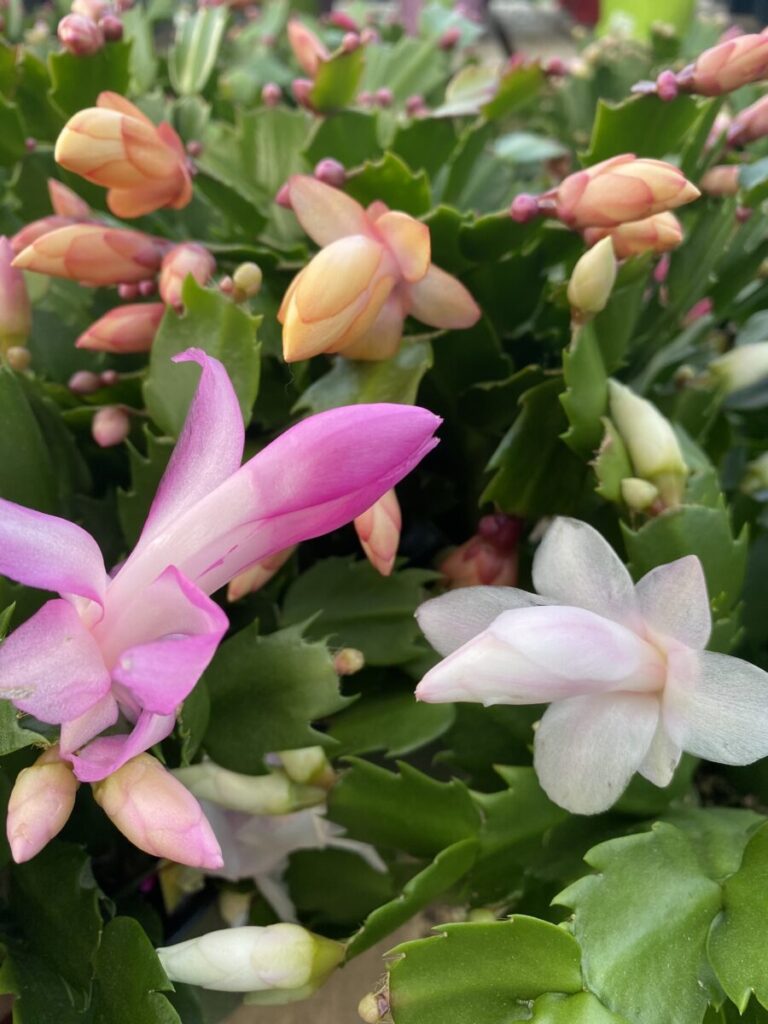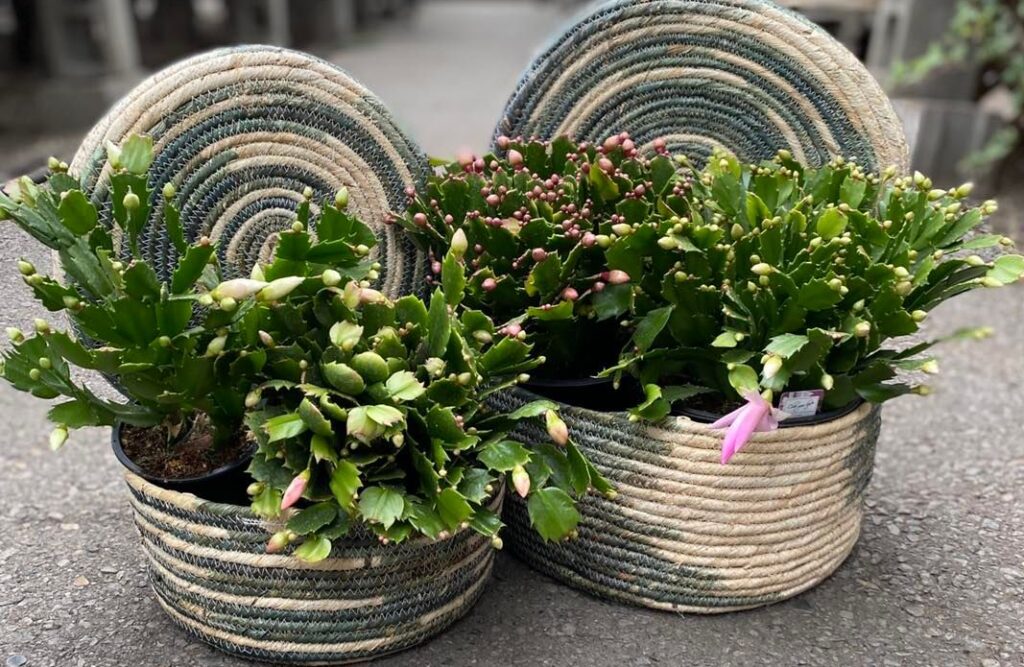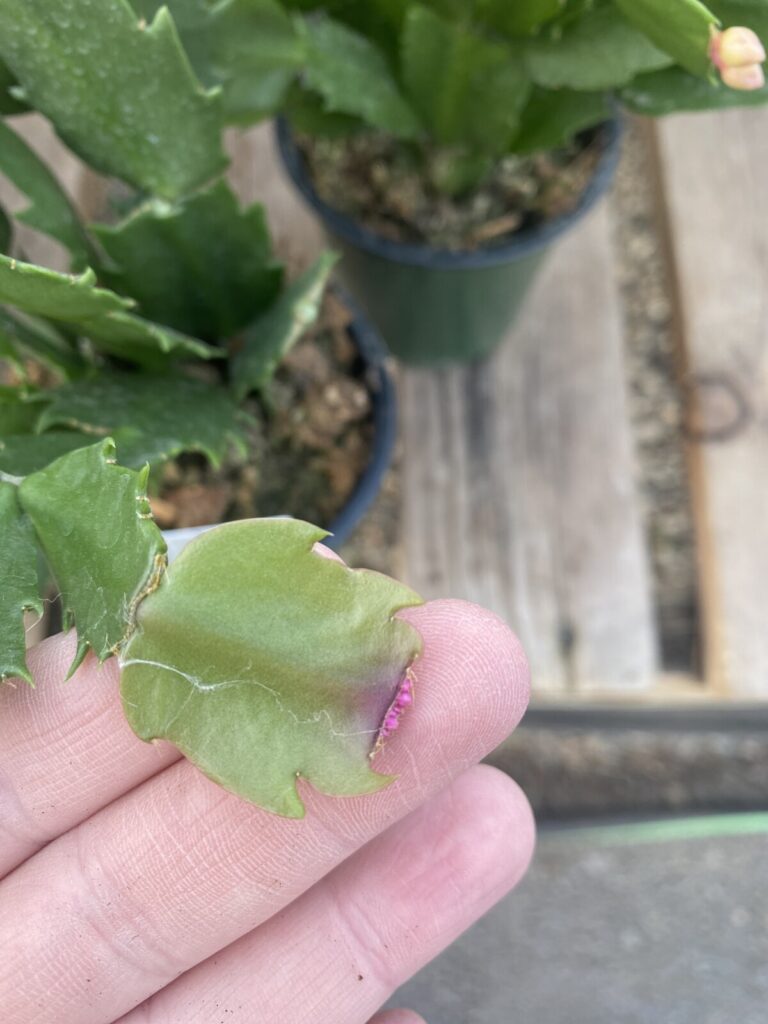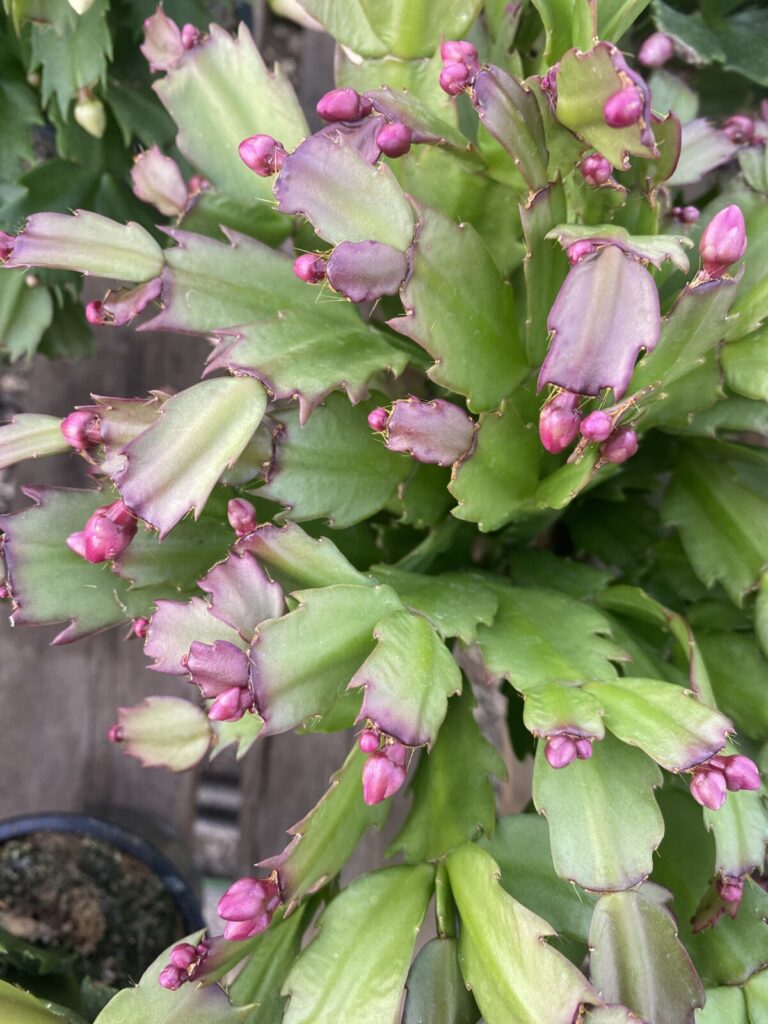Your Christmas Cactus Care Guide
Table of Contents
We love Christmas Cactus for so many reasons, but especially because they provide beautiful colour to our homes during the cold, dreary winter! These popular indoor plants are widely sought after during the Christmas season because this the time of year that they bloom. Interestingly enough, there are actually a few varieties of Schlumbergera out there, some of which bloom around the time of American Thanksgiving (called “Thanksgiving Cactus”), and some of which bloom around Easter (called “Easter Cactus” – we know, who thought of these incredibly creative names?!). But don’t worry, all of these cacti are simple to love. Regardless of the name, the care is the same.
And speaking of cacti… did you know that the Christmas Cactus isn’t actually a cactus (ok for real, who was in charge of naming this plant)? Contrary to it’s nomenclature, it’s actually a succulent epiphyte, meaning that they derive most of their nutrients from the air and grow naturally in tropical forests on trees and rocks. They are a ‘tropical cactus’ of sorts, and aren’t as drought tolerant as an actual cactus, nor can they handle the direct heat of the sun.
So with all of that in mind, here’s what you need to know about caring for your Christmas Cactus.
BOTANICAL NAME
Schlumbergera bridgesii or Schlumbergera truncate
TOXICITY
Non-toxic to people and pets
GROWTH & LIFESPAN
12”- 20” Tall at Maturity
Varied Width
Christmas Cactus vary greatly in size, mostly related to their age. An older Christmas cactus can become quite wide, if given an environment that allows for it. It’s not uncommon for these plants to live for decades when properly cared for, and many will outlive their caregivers! As a result, Schlumbergera often become generational treasures, passed down over multiple lifetimes.


LIGHT
Bright, Indirect Light
These plants do best with morning light, or filtered afternoon/evening light. Unlike typical cacti, these plants are native to tropical rainforests where they get filtered light, at most. So keep them out of the direct sun, but keep them in a bright space where they get at least 8-12 hours of indirect light per day.
WATER
Light to Moderate Watering
Again, since they aren’t actually a cactus, these plants do need regular watering. Keep in mind that the time of year will impact the amount of water your Christmas Cactus takes in – during the heat of the summer, they may need water almost daily, but in winter, they might only need water once a week. It’s best to err on the side of underwatering with these plants, to prevent root rot.
SOIL
Well-Draining Soil with Sand or Bark
As an epiphyte that grows naturally on trees and rocks, Schlumbergera appreciates oxygenated soil that doesn’t retain a ton of water. They appreciate soil that’s high in organic matter, so a mix of potting soil, sand and peat moss can provide a light, airy soil that offers lots of opportunity for oxygenation. Mix in a some bark to provide even more air pockets! We recommend Pro Mix Tropical Plant Potting Mix.
FERTILIZER
Normal Houseplant Fertilizer
While you can use a fertilizer that’s specifically formulated for blooming, the reality is that if your Schlumbergera has a well-balanced mix of organic nutrients available to it, it will have everything it needs to give you beautiful blooms. We recommend Evolve Organic Indoor House Plant Fertilizer, or even Evolve Organic Rage Plus for most of your houseplants, including Christmas Cactus. If you’re struggling to get your Christmas Cactus to bloom (even after following the instructions below in the Blooming section), then you may want to try using Alaska MorBloom or Evolve Ultra Bloom for a few months prior to your next forced-bloom attempt. It’s possible your soil is low in phosphorous, and these fertilizers provide an influx of that specific macronutrient.
REPOTTING
Infrequent
Christmas Cactus love to be root-bound, so don’t be too hasty to repot them! You’ll know it’s time to repot when you see roots peeking through the bottom drainage holes, or when you can no longer seem to saturate the soil at all with water. Christmas Cactus branches are also delicate, so keep in mind that repotting is likely to cause damage to a few of the segments. Definitely do not repot while your plant is budding or blooming, as this will likely cause enough stress to end the bloom cycle.

ENVIRONMENT
Normal
This plant will be happy in most spaces of your home, as long as it gets an appropriate amount of light. While they enjoy a little humidity, it is not necessary for them to grow happily. However, it is important to note that Christmas Cactus are easily stressed by a lot of movement, or by sudden temperature changes – so try to leave them settled in one spot most of the time, and keep them away from cold winter drafts.
BLOOMING INFO
Bloom time: Usually about 3-6 weeks in November/December
A Christmas Cactus must go through a period of dormancy in order to bloom, and in it’s natural environment, it goes dormant as the nights grow longer and cooler. This allows it to enter it’s blooming cycle, when it begins to produce buds that eventually open and bloom. When you buy a Schlumbergera plant from the store, it’s likely already been through this period of dormancy and is probably already somewhere in it’s bloom cycle.
How to Force Blooming: The secret here is combining extended darkness with a cool environment, in order to initiate dormancy in your Christmas Cactus. Put your plant somewhere where it will get 12-24 hours of darkness every day for at least 8 days (but up to 4 weeks). Create a slightly cooler environment (50-60 degrees F is ideal). Water infrequently, and do not fertilize – you’re trying to mimic an environment that encourages rest and dormancy. Once your plant begins to develop buds, you should relocate it to its normal, bright environment. It can take 4-6 weeks (sometimes up to 12 weeks) for blooms to appear.


TROUBLESHOOTING
Dropping Buds/Blooms: This is often due to one of three factors: stress (recently repotted, recently moved, exposed to a draft, etc.), underwatering (buds or blooms drying up and falling off), or overwatering (buds falling off before opening).
Common Signs of Overwatering: buds falling off before opening, branches getting mushy, or a plump, yet wilty plant.
Common Signs of Underwatering: tips getting crunchy, buds or blossoms drying up, wilty and wrinkly branches.
Red or Purple Segments: these are typically a result of light stress, and your plant may be getting too much direct light.

And of course, don’t forget to sit back and enjoy your Christmas Cactus!
– The Anything Grows Team




